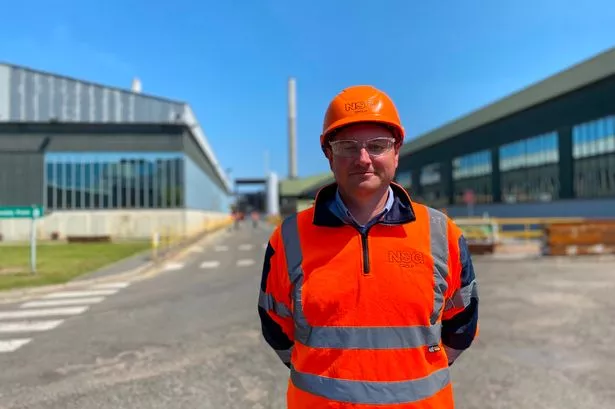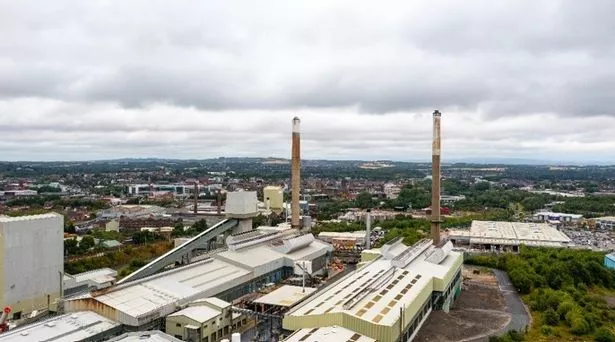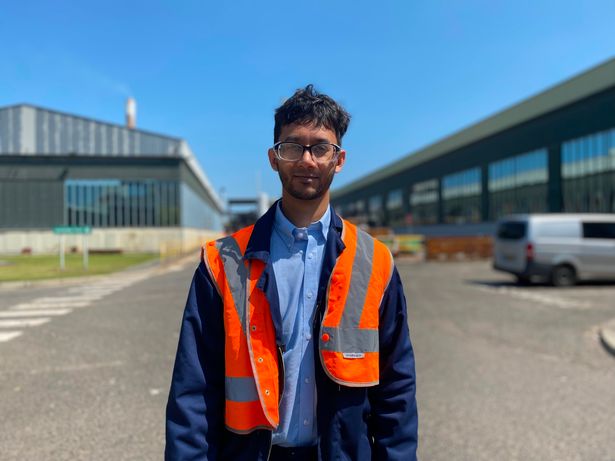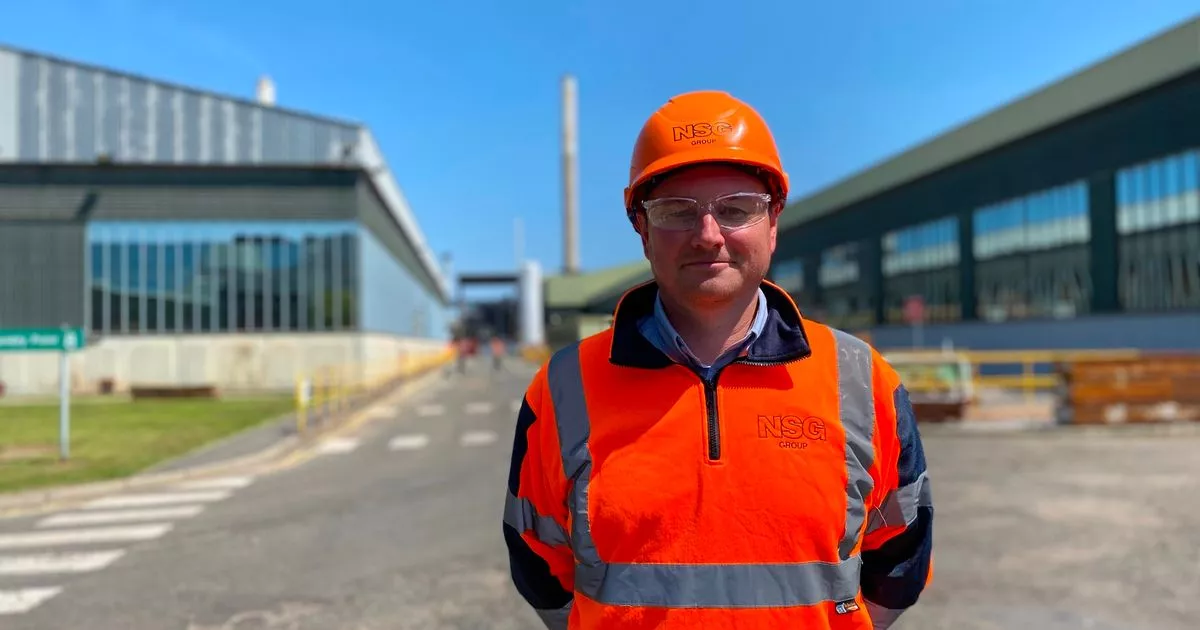In one Merseyside town, a key industry has begun a vital new eraDan Haygarth Liverpool Daily Post Editor and Regeneration Reporter
15:00, 22 Jun 2025
 Chris Hughes at Pilkington in St Helens(Image: Dan Haygarth / Liverpool ECHO)
Chris Hughes at Pilkington in St Helens(Image: Dan Haygarth / Liverpool ECHO)
Chris Hughes knows just how important his workplace is to his town. Chris, 42, is the third generation in his family to work at Pilkington – a firm which has been central to St Helens life for two centuries.
It was established in 1826 and grew to become the town’s biggest employer, pioneering industrial techniques in the process. Pilkington’s Watson Street Works site had been there since the very beginning and was where Sir Alastair Pilkington invented the modern float glass process, which revolutionised the way flat glass was produced.
However, the company, which is now a subsidiary of Nippon Sheet Glass of Japan (NSG), last year closed Watson Street and moved its production to its neighbouring Greengate site. Pilkington has now launched a new glass production at Greengate as part of a multi-million-pound investment which it says will safeguard the future of rolled texture glass manufacturing in the UK. It also means its float glass and rolled glass are now produced at the same site.
About that change, the production supervisor, born and bred in St Helens, told the ECHO: “In many ways, it’s a positive step. It’s sad to see something go that you’ve been part of for so long and something that was part of the town for nearly 200 years. It’s part of our history and our heritage, that site.
“It’s been at the forefront of innovation for 200 years, so to walk away from that is quite difficult. People find change quite difficult at times. The key message is the benefit of this new process, the benefits are massive to the company, to the town and to the people that worked here.
“We’ve got a brilliant opportunity to continue it with our innovation and use some new technologies that we’ve not had a chance to use at Watson Street – the site was that old and bits of it were falling apart.
“We couldn’t really get those pieces of kit into that type of process. Moving over to here is a fresh slate, we can bring in the technology that we need to move the process and the business forward.
“It also helps with our decarbonisation targets as well. We’re running one furnace and not two. The raw materials we use are a lot less, so there are cost savings for the company – there are lots of environmental and cost benefits to it.
At Greengate, the new rolled glass production line manufactures Pilkington Texture glass range, featuring designs and textures used for privacy and style in interior design. NSG said moving the production of Texture will enable the company to save 15,000 tonnes of CO2e annually, with Pilkington UK now manufacturing all glass from one furnace in the town.
Pilkington is also supporting the borough council with plans to transform the Watson Street site, where 700 new homes could be built.
 Pilkington UK’s Greengate Works site in St Helens,(Image: NSG)
Pilkington UK’s Greengate Works site in St Helens,(Image: NSG)
Like many towns in the North, St Helens has seen significant job losses due to deindustrialisation. As such, Ian believes the investment at Pilkington is vital for the area’s economy.
He said: “Overall [the move] is a hugely positive step and great to see that when you hear quite a lot about British manufacturing being in decline, it’s great to work for a company that sees the value in investment in a British company like ours.
“The way we can move forward with the innovations we’ve seen, we should be able to secure glassmaking in St Helens for a good number of years going forward.
“It’s so important. It’s massive – I’m third generation Pilks, I’ve grown up with my family working for Pilkington. It’s not just the employees that see the benefits, the supply chain as a whole around the town and further afield does.
“There are huge financial benefits to keeping the industry in St Helens. We are still one of the biggest employers in St Helens.
“We’ve seen the decline of the mining industry and the pharmaceuticals, so we’re the last, historical industry set up that the town has left.
“It’s massively important, both from a historical standpoint but the employment and financial benefits for the town. It’s huge for the town, this investment.”
As well as its economic advantages, NSG said investing in the new line supports Pilkington UK’s wider sustainability goals, which include a 30% reduction in greenhouse gas emissions by 2030 compared to 2018 levels and achieving net zero by 2050.
The upgrade received £3.7m in funding through the UK government’s Industrial Energy Transformation Fund (IETF), which supports industrial decarbonisation efforts.
Neil Syder, managing director of Pilkington UK, said: “Texture by Pilkington has been manufactured by our team in St Helens since 1852 and we’re proud to continue that legacy with this new rolled glass line. It represents a meaningful step forward, not just in securing the future of texture glass manufacturing, but in significantly lowering the carbon footprint of the range.
“Its construction was an incredible feat of engineering too. To build the new line, our team needed to break into the side of a live glass furnace, constructing a canal that takes glass from away our current float line to the new rolled glass line in a separate building.
“This work now enables us to manufacture all our glass from one furnace, which saves us 15,000 tonnes of CO2e per year: the equivalent of taking over 8,800 cars off the road for a year.
“By investing in our Greengate Works site, we’re building on nearly 200 years of glassmaking heritage and innovation while positioning ourselves to meet the changing needs of our industry as it decarbonises.”
Working at Greengate Rameez Ajaz at Pilkington in St Helens(Image: Dan Haygarth / Liverpool ECHO)
Rameez Ajaz at Pilkington in St Helens(Image: Dan Haygarth / Liverpool ECHO)
The investment at Greengate means the site can produce rolled and float glass at the same time. Rolled glass is made by molten glass being passed through rollers, whereas float glass sees the molten substance poured onto a bed of molten tin, where it forms as a flat sheet.
Production on the site involves a huge furnace, which heads to more than 1,000C to begin the glassmaking process. Working near it, known as the ‘hot end’ of the factory, means that temperatures can get to around 50C. It’s not easy work but plenty of measures are in place to ensure it’s handled safely.
Manufacturing graduate Rameez Ajaz, 27, originally from Bradford, knows all about those conditions. He told the ECHO: “As a graduate, you’re kind of thrown in all sorts of areas.
“I’ve been part of the float process and also the roll process. It can be anything between process improvement or ensuring it’s all running as indented.
“We’ve got the hot end and the cold end. Primarily I’m at the hot end. When it comes to a new process, I’m in both on the new line.
“When you’re walking within the building it can be above 50C. Nothing really prepares you for that. Some jobs require working in those hot environments. The new line we’ve put in is a very invasive job.
“We had to make a hole inside of the furnace while it was burning. The furnace operates around 1,600C, you have individuals working on that creating a hole. It’s crazy, but I enjoy it.”
Chris added: “It’s challenging – it is hot. You have got to manage what you do on days like this. We have rules and regulations in place, we have risk assessments, procedures to guarantee safety – especially in hot weather.
“There’s guidance for liquid intake and food, how to get your energy back up. There are limitations as to how long you can spend in certain areas. It’s quite a job to manage it – you know yourself when you’re feeling tired when you’re doing the job.
“If there’s any risk of you feeling like that, then you come out. There’s no pressure on anybody to over-exert themselves in those positions.
“It is a test at times. Some of the jobs, like changing the pattern of the glass, so we take the entire machine out, we change the pattern of the glass, we have to stop the flow of glass and restart it.
“That job – and any for people in and around the machine with the glass coming through, where you are right at the coalface, they are testing conditions. It’s something you have to manage well with the personnel you have.”
